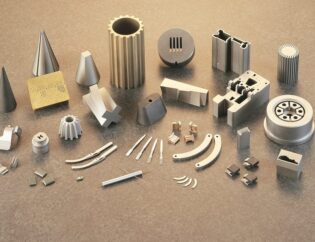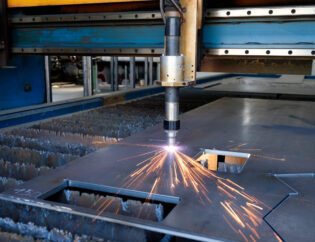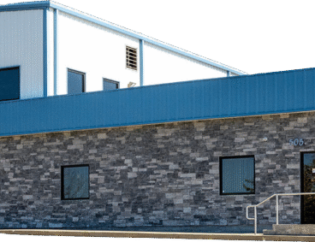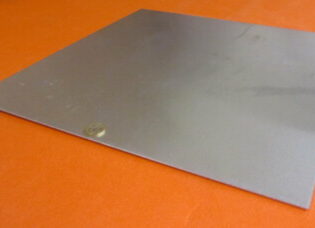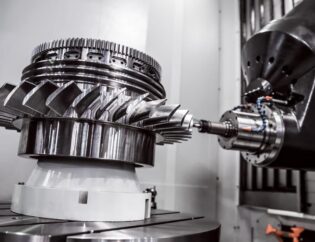Composites machining is a critical area in modern manufacturing, combining advanced materials with innovative techniques to achieve superior performance. As industries increasingly rely on lightweight, high-strength materials, understanding the intricacies of machining composites becomes essential. This guide aims to demystify the processes involved, offering insights into best practices, tools, and techniques.
Readers can expect to learn about the unique properties of composite materials, the challenges they present during machining, and effective strategies to overcome these hurdles. We will explore various machining methods, including cutting, drilling, and finishing, while emphasizing the importance of precision and efficiency.
Additionally, this guide will cover the latest advancements in technology and equipment that enhance composite machining. By the end, readers will be equipped with the knowledge to optimize their machining processes, ensuring high-quality results and improved productivity in their operations.
Best Practices in the CNC Machining of Composites
CNC machining is becoming increasingly popular across the manufacturing industry because it can process an extensive range of materials. CNC machining allows the creation of accurate parts of different materials according to the 3D model. Among these materials, composites have gained significant traction due to their unique properties and applications. This guide will delve into the best practices for CNC machining of composites, exploring their types, technical features, and the advantages they offer in various industries.
Understanding Composites
Composites are materials made from a combination of two or more materials with different properties. This combination results in a new material that exhibits enhanced characteristics, such as improved strength, durability, and resistance to environmental factors. Common types of composites include polymer matrix composites (PMCs), metal matrix composites (MMCs), and ceramic matrix composites (CMCs).
Types of Composites
| Type | Description | Applications |
|---|---|---|
| Polymer Matrix Composites | Composed of a polymer matrix reinforced with fibers or particles. | Aerospace, automotive, consumer goods. |
| Metal Matrix Composites | Combine metal with ceramic or carbon fiber reinforcement for enhanced properties. | Aerospace, automotive, military. |
| Ceramic Matrix Composites | Integrate ceramic fibers into a ceramic matrix for high-temperature applications. | Aerospace, industrial machinery. |
| Fibre-Reinforced Plastics | Use fibers like carbon or glass in a polymer matrix for lightweight structures. | Automotive, marine, structural applications. |
Technical Features of CNC Machining Composites
CNC machining of composites requires specific considerations due to their unique properties. Below is a comparison of key technical features relevant to composite machining.
| Feature | Description | Importance |
|---|---|---|
| Tool Material | Diamond-coated tools are preferred for their hardness and wear resistance. | Enhances tool longevity and performance. |
| Cutting Speed | Recommended speeds range from 550 to 760 m/min. | Affects surface finish and tool wear. |
| Feed Rate | Optimal feed rates are around 0.076 mm/tooth. | Ensures efficient material removal. |
| Coolant Use | Minimum quantity lubrication (MQL) or air cooling is recommended. | Prevents overheating and material damage. |
| Tool Geometry | Tools with positive rake angles reduce cutting forces. | Minimizes delamination and improves finish. |
Best Practices for CNC Machining of Composites
-
Select Appropriate Tools: Use diamond-coated or carbide tools to withstand the abrasiveness of composites. Tools should have geometries that facilitate clean cuts and minimize heat generation.
-
Optimize Cutting Parameters: Adjust cutting speeds and feed rates based on the specific composite material. Higher speeds and appropriate feed rates can enhance machining efficiency and surface quality.
-
Utilize Effective Coolants: Implement cooling strategies that prevent overheating. MQL or air cooling can be effective in maintaining tool performance and preventing material degradation.
-
Ensure Proper Workpiece Fixturing: Use hydraulic or pneumatic clamping systems to secure the workpiece. This stability is crucial for maintaining accuracy during high-speed operations.
-
Monitor Tool Wear: Regularly inspect tools for wear and replace them as necessary. This practice helps maintain machining quality and reduces the risk of defects in the final product.
Applications of CNC Machined Composites
CNC machining of composites is widely utilized across various industries due to their advantageous properties. Here are some notable applications:
– Aerospace: Composites are used in manufacturing wings, fuselages, and other structural components, providing strength while reducing weight.
– Automotive: Lightweight composite parts enhance fuel efficiency and performance in vehicles, including body panels and chassis components.
– Renewable Energy: Composites are integral in wind turbine blades and solar panel frames, offering durability and resistance to environmental factors.
– Consumer Electronics: Strong and lightweight casings for devices like smartphones and laptops are often made from composite materials.
Conclusion
CNC machining of composites presents unique challenges and opportunities. By understanding the properties of different composite materials and implementing best practices, manufacturers can achieve high-quality results. The versatility of composites makes them suitable for a wide range of applications, from aerospace to consumer electronics. As the demand for lightweight and durable materials continues to grow, mastering the CNC machining of composites will be essential for future innovations.
FAQs
1. What are the common types of composites used in CNC machining?
The most popular composites include polymer matrix composites, metal matrix composites, and ceramic matrix composites, each offering unique properties suitable for various applications.
2. Why are diamond-coated tools preferred for machining composites?
Diamond-coated tools provide exceptional hardness and wear resistance, making them ideal for handling the abrasiveness of composite materials.
3. How does cutting speed affect the machining of composites?
Cutting speed influences the surface finish and tool wear. Optimal speeds between 550 to 760 m/min are recommended for effective machining.
4. What is the role of coolants in composite machining?
Coolants help dissipate heat generated during machining, preventing damage to both the tool and the composite material.
5. What industries benefit from CNC machined composites?
Industries such as aerospace, automotive, renewable energy, and consumer electronics benefit significantly from the use of CNC machined composites due to their lightweight and durable properties.

